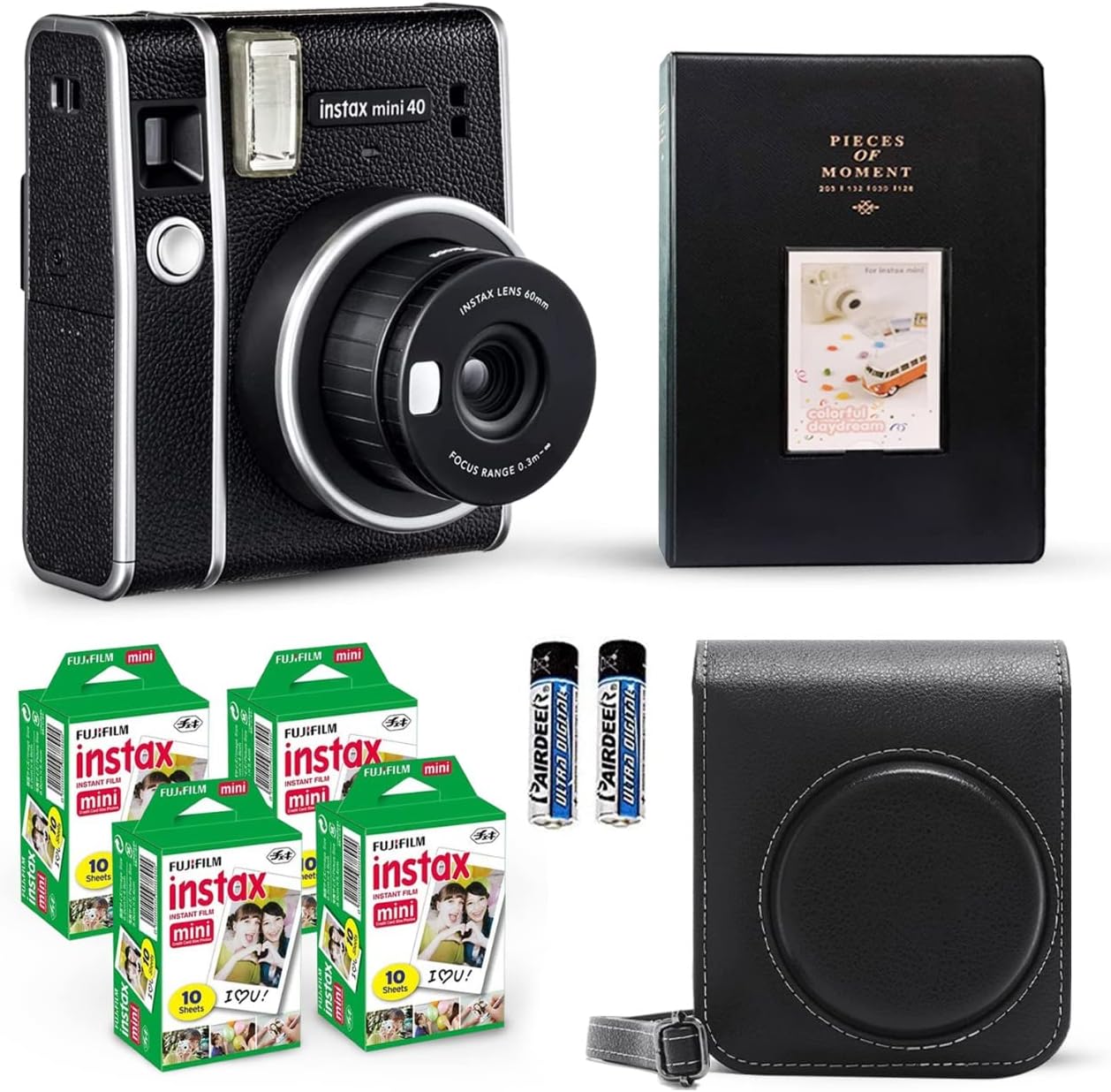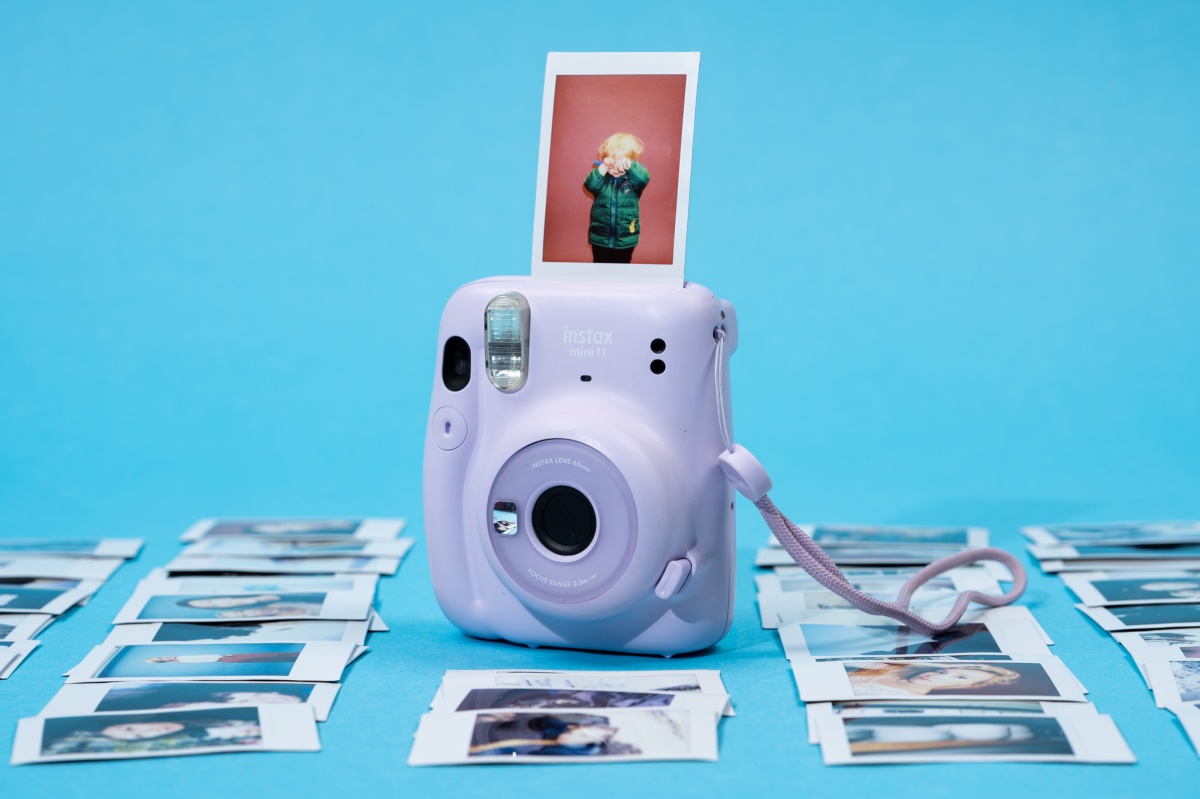How to Use Polaroid Instant Camera: A Professional Photog Guide
Professional photographers often find themselves craving a return to simplicity and authenticity. A Polaroid instant camera can offer just that, allowing you to experience the joy of immediate photography. This guide is designed to help professionals like you master the nuances of using Polaroid instant cameras for stunning results.
Before diving into the details, consider the impact Instant Cameras have had on photography culture. These cameras have a unique charm, offering an analog escape in a digital world. Whether capturing candid moments or creating art, understanding how to wield a Polaroid instant camera will add a new dimension to your skillset.

Why Polaroid? The Professional Appeal
Polaroid instant cameras bring a sense of nostalgia, coupled with a distinctive style that's hard to mimic. For professionals, the raw texture and one-of-a-kind prints are invaluable. Heres why you should consider making room for a Polaroid in your gear bag.
Instant Gratification
Unlike digital cameras that require extensive post-processing, Polaroid instant cameras offer immediate results. This instant gratification can be a refreshing change, especially during events where guests can walk away with a tangible memory.
Unique Aesthetic
The film used in Polaroid cameras produces a soft, slightly unpredictable look, giving every photograph a unique touch. This can be particularly appealing for artistic projects where you want to break free from the pixel-perfect world of digital photography.
Analog Experience in a Digital Age
In an era of screen fatigue, the tactile experience of handling a Polaroid can be incredibly satisfying. The sound of the film ejecting, the chemical development process, and even the slight imperfections contribute to a deeply rewarding photographic experience.

Getting Started: Basic Setup and Functions
Whether youre a Polaroid novice or someone seeking to refine their instant print skills, understanding the basic setup and functions is crucial. Here's a step-by-step guide to get you started:
Unboxing and Initial Setup
Upon unboxing your Polaroid instant camera, the first step is to insert the film pack. The process may vary slightly based on the model, but generally, you will see yellow marks on the camera and the film pack. Align them, slide in the film, and close the film door carefully. Your camera is now ready for action.
Battery Check
Polaroid cameras are known for their simplicity, but checking the battery is essential. Some models have built-in rechargeable batteries, while others use film packs that include a battery. Always ensure that your camera is amply charged to avoid any disruptions.
Focusing and Framing
Getting the right focus and framing is crucial. Most Polaroid cameras feature a fixed focus lens, meaning you need to be mindful of your distance from the subject typically around 2-4 feet. Modern versions might offer auto-focus and additional focusing options.

Advanced Techniques for Professional Results
Once you have the basics down, it's time to explore advanced techniques that can elevate your Polaroid photography.
Lighting Tricks
Polaroid cameras are incredibly sensitive to light, making it imperative to understand how to manipulate lighting conditions. Natural light is your best friend, but carrying a portable LED light or using a reflector can also work wonders. Overexposure and underexposure can add different moods to your images, offering creative versatility.
Manipulating Film
One of the fascinating aspects of Polaroid film is its malleability. Professionals often manipulate the film during development to create unique effects. Timing is key gently pressing or scratching the developing film can produce textured or distorted outcomes. Experiment with this technique to discover your unique style.
Multiple Exposures
If your model supports it, multiple exposures can add depth and complexity to your shots. Layering images can result in surreal compositions. This technique requires planning and practice, but the results can be extraordinary.

Troubleshooting Common Issues
Even seasoned pros can encounter challenges when using instant cameras. Here are some tips on troubleshooting common issues:
Overexposed or Underexposed Photos
Balancing light can be tricky with Polaroid cameras. If your images are consistently overexposed, try shooting in lower light conditions or using a neutral density (ND) filter. Conversely, if theyre underexposed, shooting in brighter environments or introducing additional light sources can help.
Film Jams
While uncommon, film jams can occur. If your film gets stuck, avoid the temptation to force it out. Instead, carefully open the film compartment in a dark or low-light setting to minimize exposure. Gently remove the jammed film and reload if necessary.
Inconsistent Colors
Color inconsistencies can happen, but theyre often part of the Polaroid charm. If you must troubleshoot, ensure that your film is stored correctly and used within its expiry date. Temperature can also affect colors, so aim for moderate, stable conditions when shooting.
Integrating Polaroid Photography into Your Professional Work
Using Polaroid instant cameras can add a unique touch to your portfolio. Heres how to integrate instant photography into your professional work seamlessly:
Event Photography
Polaroid cameras are fantastic for events. Offering guests instant prints creates an interactive experience, leaving them with a memorable takeaway. From weddings to corporate events, incorporating Polaroid shots can elevate your service offering.
Portrait Sessions
Polaroid portraits offer a vintage appeal that resonates with many clients. The process is quicker than digital, encouraging spontaneity and authentic expressions. This can be an excellent addition to your portrait sessions, offering clients an exclusive keepsake instant photo.
Artistic Projects
Polaroid photography is ideal for personal artistic projects. The analog process brings unpredictability, adding an element of surprise and creativity. Many professional photographers use Polaroid cameras to pull off remarkable and life-changing art pieces.
Frequently Asked Questions
What is the best film for Polaroid instant cameras?
The type of film you use can significantly impact your images. The i-Type and 600 Film are widely recommended for their quality and consistency.
How do I store my Polaroid prints?
To ensure longevity, store your prints in a cool, dry place away from direct sunlight. Acid-free albums or archival storage boxes are excellent options.
Can I use expired Polaroid film?
Using expired film can result in color shifts and unpredictable outcomes. While some photographers enjoy this unpredictability, it may not be suitable for professional work requiring consistency.
For additional insights and detailed guides, you can check this article from TechRadar.
Additionally, delve into other fascinating reads from our blog, such as How to delete photos, Action camera comparison, and Difference between action cameras and camcorders.
As an Amazon Associate, I earn from qualifying purchases.

